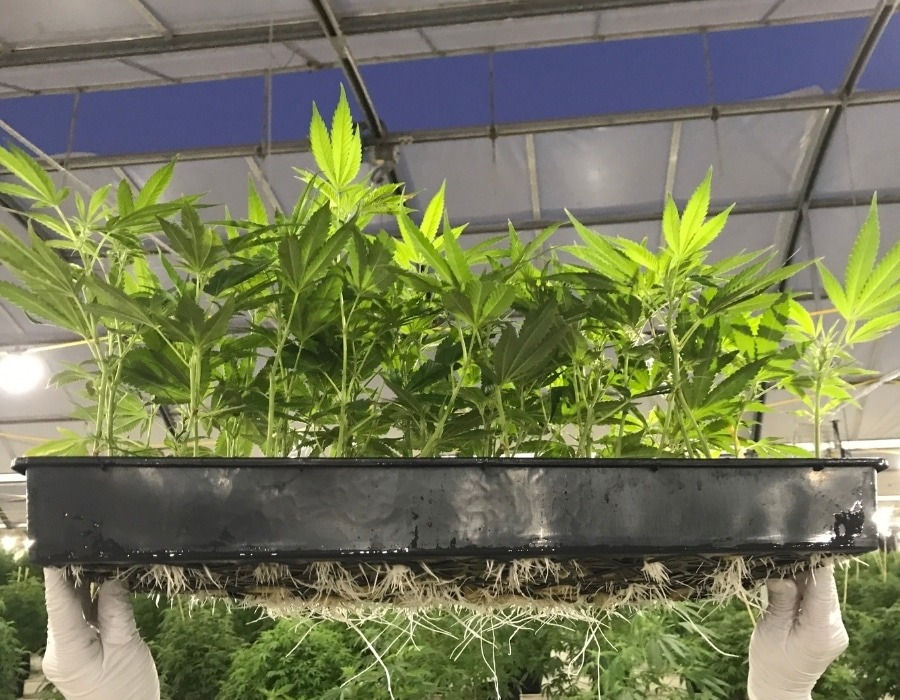If you’ve ever been curious to see how a cannabis plant’s root system develops underneath the green foliage above, try growing a new strain using an aeroponic environment. Growing marijuana plants in these substrate-free surroundings provide a bird’s-eye view of the intricate root system’s development throughout the plant’s life cycle.
Interestingly, aeroponic gardening originated back in the early 1920s as scientists began researching the links between root and plant growth development. Aeroponics provided an opportunity to visualize intricate rootstock outside of the soil. Their experiments revealed what is now one of the most efficient methods for growing in the cannabis industry.
Pearly white roots expose themselves quickly in these air-driven environments, promoting rapid expansion in early vegetative growth stages. Watching root systems advance in the next few weeks showcases an intricate network of hair-like appendages as bustling microbial activity advances plant growth.
By the time marijuana plants mature into the flowering state, massive root balls dangling in the air under the foliage reveal the big picture of how cannabis plant root systems develop. Aeroponic growing techniques teach cannabis cultivators how root systems progress. As an added bonus, they also produce high yields of rich trichome-dense flowers in a much shorter time.
While aeroponic environments provide a beneficial, efficient system for marijuana cultivation, there are also some drawbacks when using this growing medium. In this guide, we focus on the benefits and the disadvantages of cannabis cultivation in aeroponics systems and how to get started.
What is Aeroponic Growing?
Cannabis plants cultivated in aeroponic systems combine abundant oxygen, water, and a soluble nutrient spray, supporting the hungry environment without clinging to a substrate. They simply grow in the air. The system contains a plant bed and a misting chamber supported by an enclosed reservoir below.
Inside the bed, protective collars cradling stalks at the plant base support the structure above. Small baskets of net pots attached to the collars underneath the plant bed allow the root system to expand prolifically.
The misting chamber contains a series of pumps, tubing, and misters, which spray a fine mist of water and nutrient solution directly at the root zone. Delivery of these atomized droplets is on a cyclic schedule. For instance, pumps spray tiny droplets for one minute, subsequently shutting off for five minutes. The down-time, when misters are off, allows the plants to absorb the soluble solution. Microbial colonization on root hairs helps the cannabis plant process the nutrient uptake.
Excess water and nutrient reserves dripping off the rootstock are returned to the reservoir below through a drain pipe in the misting chamber. This resourceful method reduces the amount of nutrient-rich water required for optimal growth as the solution is continually recycled.
Aeroponic growing systems are similar to hydroponic techniques as they both supply nutrient formulas directly to exposed root systems. However, aeroponic schematics take it to the next level as they deliver exact nutrient essentials without the buffer of a substrate.
